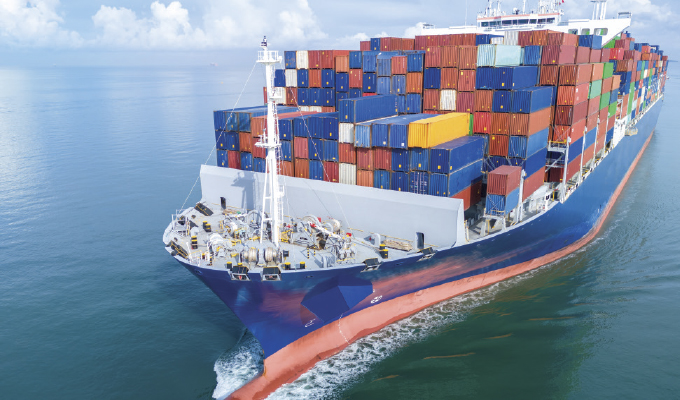Ask any construction executive what keeps them up at night, and you’ll likely hear: “We’re waiting on materials.” Steel joists stuck in port, delayed concrete trucks, or unavailable specialty equipment can derail even the best-planned schedules. Today’s global supply chain disruptions and longer lead times aren’t just frustrating, they’re costly. Idle labor, missed milestones, and rework erode margins and reputations.
With the right tools, teams can shift from reactive firefighting to proactive planning. Embedding material and equipment dependencies directly into the schedule—and adjusting as conditions change—helps contractors reduce risk and keep projects moving.
At Planera, we see the most successful teams aren’t those with the biggest procurement budgets, they’re the ones who schedule smarter.
VOLATILITY IS THE NEW NORMAL
Over the past five years, construction supply chains have been tested like never before. From global shocks like the COVID-19 pandemic and geopolitical conflicts to regional pressures such as labor shortages and freight bottlenecks, procurement has become a strategic function in its own right.
The numbers tell the story:
- 84 percent of contractors reported delays due to material shortages in the past year (AGC Survey).
- Lead times for critical items, such as transformers, rebar, and HVAC components, have doubled or tripled since pre-2020.
- Rental markets for high-demand equipment such as tower cranes and earthmovers are stretched thin in many U.S. regions, with long waitlists and rising costs.
All this adds a layer of uncertainty that traditional scheduling methods weren’t designed to handle.
DOMINO EFFECT OF PROJECT DELAYS
Material and equipment disruptions create a ripple effect. One late delivery can delay multiple downstream activities. Labor sits idle, crews are rescheduled, inspections pushed, and sometimes out-of-sequence work increases the risk of quality or safety issues.
A delayed concrete pour, for example, might impact not only the immediate floor slab but also framing, MEP installation, inspections, and ultimately, project turnover. And if the boom-lift you need for that work isn’t available during the rescheduled window? The delay compounds.
Most schedules capture high-level milestones but rarely show material and equipment dependencies with enough detail for true risk management.
PROACTIVE SCHEDULING: FIRST LINE OF DEFENSE
Getting ahead of disruptions means treating material and equipment availability as core drivers of the schedule. Project timelines should account for:
- Lead times for long-duration items
- Critical equipment rental windows
- Dependencies between procurement and field activities
- Contingency plans for substitutions or delays
Modern scheduling platforms like Planera support this level of planning. Rather than static Gantt charts or disconnected spreadsheets, teams can use dynamic schedules to map when materials are needed and must be ordered.
Procurement milestones can be linked directly to field activities. If a delivery slips, the schedule updates automatically. Teams can also simulate alternate scenarios—for example, pushing framing by two weeks for a delayed steel shipment.
IMPORTANCE OF PROCUREMENT VISIBILITY
Scheduling is only as proactive as the data behind it. That’s why visibility into procurement status is critical. Many contractors still rely on manual updates, siloed spreadsheets, or emails to track orders. This delays awareness and slows the ability to respond.
With Planera, procurement tracking is embedded directly into the schedule, with activity tags for status like “Ordered,” “Shipped,” “Delayed,” or “Delivered.” This keeps teams aligned and flags at-risk items early.
MANAGING EQUIPMENT LOGISTICS
Like materials, equipment must be where it’s needed, when it’s needed—not sitting unused or missing from the site.
With more competition for rentals and shrinking usage windows, equipment logistics must be planned in advance. Tools like Planera help leaders visualize equipment allocation across trades and tasks, reducing double-booking, downtime, and last-minute scrambles.
Layered scheduling overlays the equipment dependencies on the broader construction sequence. Delivery, setup, usage, and removal can be aligned with real field conditions—whether you’re managing a few forklifts or a fleet of rigging gear.
One contractor recently used Planera to cut equipment days by more than 18 percent on a high-rise project, simply by spotting overlaps and optimizing crane utilization across trades.
ANTICIPATING RISK AND BUILDING IN BUFFERS
Despite best efforts, some disruptions are inevitable. That’s why resilient schedules account for uncertainty.
Planera lets teams model float, buffers, and alternate paths directly in the schedule. For example:
- If a long-lead item has a 10-week delivery, teams might add a 2-week buffer before its related activity.
- If two pieces of equipment are needed for the same task, alternate schedules can account for different availability scenarios.
- If a material delivery is “delayed,” the schedule can adjust automatically and alternatives can be evaluated.
Adjustments like these—difficult or manual in legacy systems—become faster and easier with the right tools. The result is more resilient schedules, fewer surprises in the field, and greater confidence when communicating changes.
RESILIENCE IS CRITICAL TO PROJECT SUCCESS
Ultimately, managing material and equipment availability isn’t just a scheduling challenge; it’s a communication challenge. Delays will inevitably occur, but their impact is reduced when teams are aligned, informed, and able to make adjustments. The schedule should serve as a shared source of truth for everyone.
Whether you’re a superintendent, procurement lead, or owner, visibility into the same plan keeps stakeholders aligned. That transparency drives accountability, faster decisions, and better outcomes.
In a volatile market, resilience is a competitive advantage. Contractors who build flexibility into schedules are better positioned to absorb shocks and deliver for clients. By integrating material and equipment planning into the heart of scheduling, teams gain the ability to anticipate and adjust before delays ripple across the jobsite.
The schedule should no longer be a static document in a binder or back office. It needs to be a living, collaborative framework that keeps crews aligned, spots risks early, and supports better decisions in the field. With the next supply chain disruption always around the corner, resilience isn’t optional—it’s what keeps contractors ahead.

about the author
Nitin Bhandari is the co-founder and CEO of Planera, a construction tech startup revolutionizing project management with its visual, Critical Path Method (CPM)-based scheduling and planning software. For more information, visit www.planera.io.


